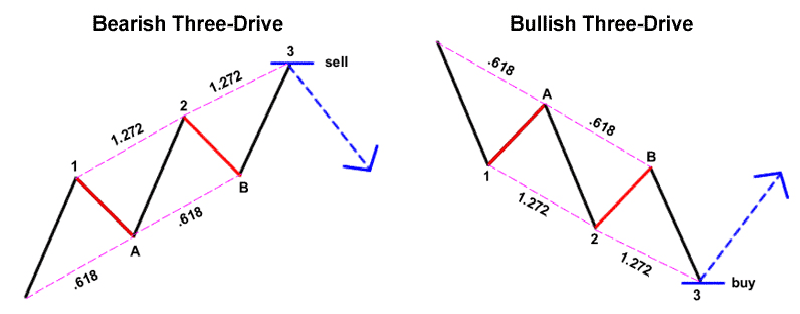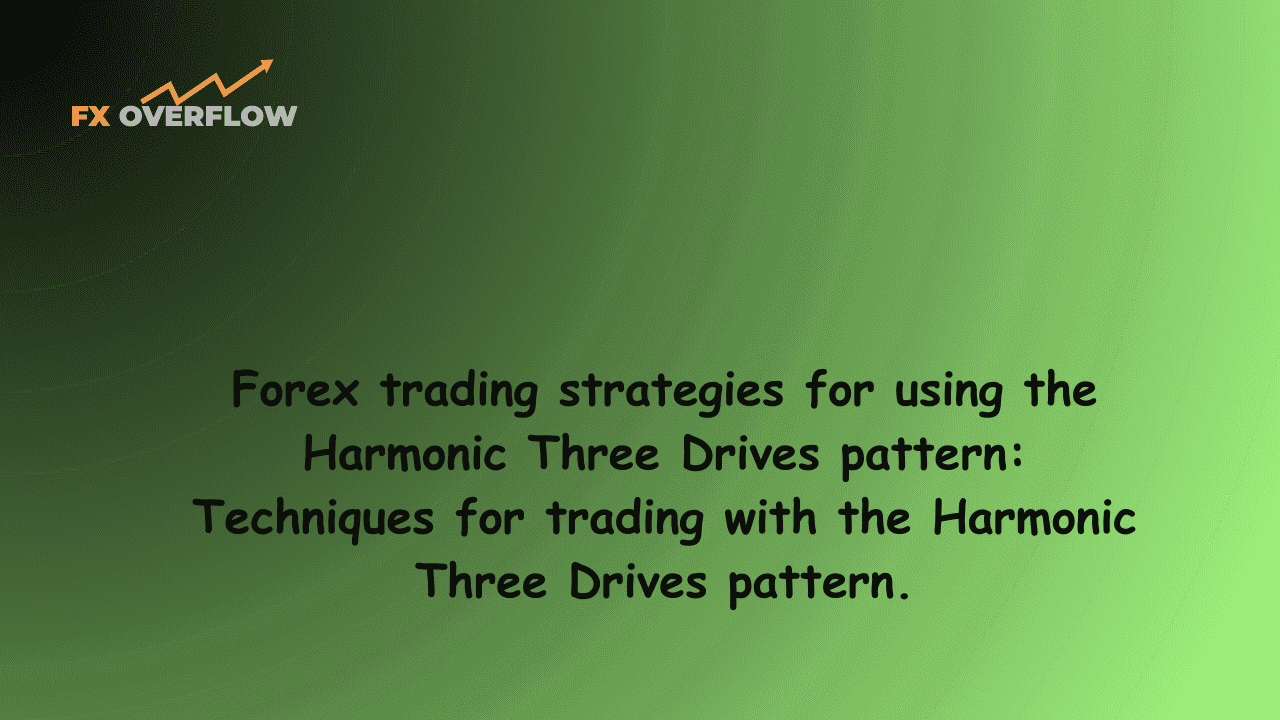Forex Trading Strategies for Using the Harmonic Three Drives Pattern: Techniques for Trading with the Harmonic Three Drives Pattern
In the complex world of forex trading, traders employ a myriad of strategies and patterns to anticipate market movements and make informed trading decisions. One such pattern is the Harmonic Three Drives pattern, a powerful tool that can provide traders with valuable insights into potential market reversals and continuation trends. In this article, we will delve into the intricacies of the Harmonic Three Drives pattern and explore effective trading techniques that can be employed to capitalize on its predictive capabilities.
Table Content
I. Understanding the Harmonic Three Drives Pattern
1. Drive 1
2. Retracement
3. Drive 3
II. Trading Techniques for the Harmonic Three Drives Pattern
1. Pattern Identification and Confirmation
a) Support and Resistance Levels
b) Candlestick Patterns
c) Divergence
2. Entry and Stop Loss Placement
3. Target Levels
4. Risk Management
5. Combining with Other Indicators
6. Practice and Back testing
III. Footnote
Understanding the Harmonic Three Drives Pattern
The Harmonic Three Drives pattern is a variation of the more well-known Harmonic Patterns, which are a group of geometric price patterns that follow specific Fibonacci ratios and symmetry rules. The Three Drives pattern is characterized by its symmetry and alignment with the Fibonacci ratios of 0.618 and 1.618. It consists of three consecutive price swings or drives, with the second drive retracing approximately 0.618 of the first drive, and the third drive extending to a length of 1.618 times the length of the first drive.

The pattern's structure can be simplified as follows:
1. Drive 1: This is the initial price move in a certain direction, forming the basis of the pattern.
2. Retracement: Drive 2 is a retracement of Drive 1, usually around 0.618 of its length.
3. Drive 3: This drive extends beyond Drive 1, typically reaching 1.618 times its length.
The key idea behind the pattern is that it highlights potential reversal points after the completion of Drive 3, indicating a possible change in the prevailing trend. However, like any technical analysis tool, the Harmonic Three Drives pattern should be used in conjunction with other indicators and tools to increase its accuracy and reliability.
Trading Techniques for the Harmonic Three Drives Pattern
1. Pattern Identification and Confirmation
The first step in trading with the Harmonic Three Drives pattern is to correctly identify the pattern on a price chart. This involves finding the three drives and ensuring that they adhere to the Fibonacci ratios mentioned earlier. Once identified, traders often look for additional confirmation signals before making trading decisions. These confirmation signals could include:
a) Support and Resistance Levels: Check if the pattern aligns with existing support or resistance levels, as this can enhance the pattern's reliability.
b) Candlestick Patterns: Look for bullish or bearish candlestick patterns at the completion of Drive 3, such as doji candles or engulfing patterns, to validate potential reversals.
c) Divergence: Observe if there is any bullish or bearish divergence between the price and oscillators like the Relative Strength Index (RSI) or Moving Average Convergence Divergence (MACD).
2. Entry and Stop Loss Placement
After identifying and confirming the Harmonic Three Drives pattern, traders need to determine their entry and stop loss levels. Entry points are often chosen near the completion of Drive 3, as this is where the reversal or continuation is anticipated. Stop loss orders should be placed beyond the last drive to mitigate potential losses in case the market moves against the anticipated direction.
3. Target Levels
The Fibonacci extension levels play a crucial role in establishing potential target levels for trades based on the Harmonic Three Drives pattern. The most common extension levels used are 0.618 and 1.618, which correspond to the length of Drive 1. Traders can set partial profit-taking levels at these extensions and hold a portion of their position to target even higher extension levels if the trend continues.
4. Risk Management
As with any trading strategy, risk management is of paramount importance when trading with the Harmonic Three Drives pattern. Traders should never risk more than a predetermined percentage of their trading capital on a single trade. This ensures that even if a trade goes against expectations, the overall trading account remains protected.
5. Combining with Other Indicators
To increase the accuracy of trading signals, traders often combine the Harmonic Three Drives pattern with other technical indicators. Moving averages, trendlines, and oscillators can provide additional insights into the market's direction and strength. Combining multiple indicators can help filter out false signals and provide a more comprehensive view of the market conditions.
6. Practice and Back testing
As with any trading strategy, practice and back testing are crucial to refining your skills. Before implementing the Harmonic Three Drives pattern in a live trading environment, practice identifying and trading the pattern on historical price data. This helps you gain confidence in your ability to recognize the pattern and make informed decisions based on it.
Footnote:
The Harmonic Three Drives pattern is a valuable tool in a forex trader's arsenal, offering insights into potential market reversals and continuation trends. By mastering the art of pattern identification, confirmation, entry and exit strategies, risk management, and complementary indicator usage, traders can harness the predictive power of this pattern to enhance their trading outcomes. However, it's essential to remember that no trading strategy is foolproof, and prudent risk management and continuous learning are essential for long-term success in the dynamic world of forex trading.











Discussion